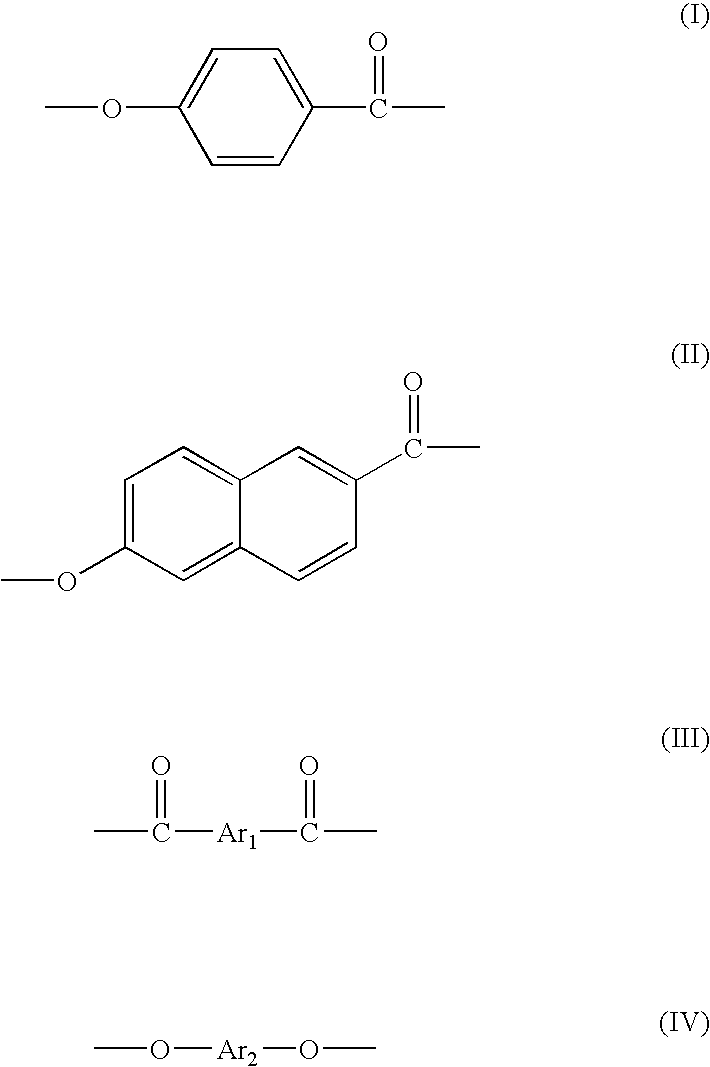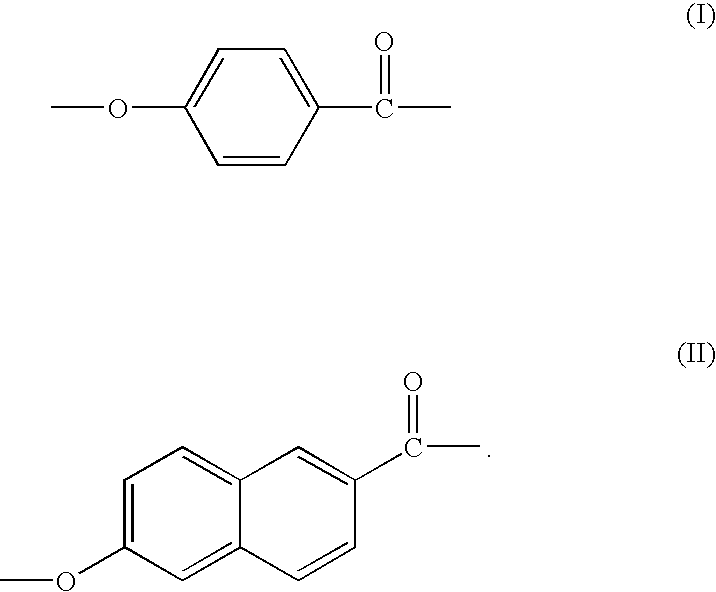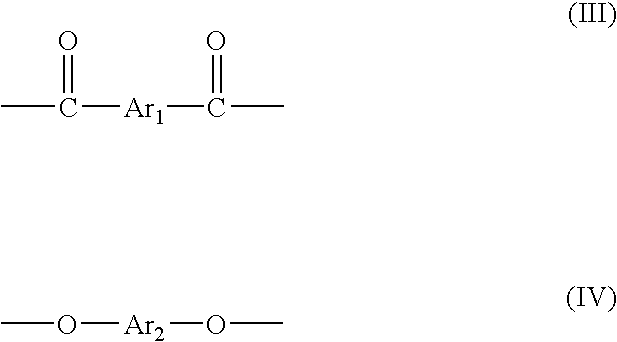Method for manufacturing thermotropic liquid-crystalline polymer
a technology manufacturing method, which is applied in the direction of mixing, chemistry apparatus and processes, impression caps, etc., can solve the problems of reducing the manufacturing cost of thermotropic liquid crystal polymer, affecting product quality, and high pri
- Summary
- Abstract
- Description
- Claims
- Application Information
AI Technical Summary
Benefits of technology
Problems solved by technology
Method used
Image
Examples
example 1
[0029]226.37g (73 mol %) of 4-hydroxybenzoic acid, 114.07g (27 mol %) of 6-hydroxy-2-naphthoic acid, 233.78g (1.02 times hydroxyl equivalent) of acetic anhydride and 22.5 mg (75 ppm to resin to be generated) of p-toluene sulfonic acid as a catalyst were charged in a polymerization vessel provided with a stirrer having a torque meter, a reflux column, a nitrogen introduction tube and a condenser.
[0030]After substituting inside of the system with nitrogen, the temperature was raised to 140° C. to conduct acetylation for 1 hour. Subsequently, the temperature was raised by 1° C. per minute up to 325° C., while evaporating and removing acetic acid produced as a by-product, followed by reducing the pressure to 10 Torr (1334 Pa) over 15 minutes to conduct polycondensation while evaporating excess acetic acid. After the torque of the stirrer reached the predefined value (4.5 kg·cm), nitrogen was introduced to discharge the polymer from the under side of the polymerization vessel under incre...
examples 2 and 3
[0032]Polymerization was conducted in the same way as Example 1 by using the volume of acetic anhydride and p-toluene sulfonic acid as listed in Table 1. Yield and amount of generated gases are listed in Table 1.
example 4
[0033]Polymerization was conducted in the same way as Example 1 by using 236.08 g (1.03 times hydroxyl equivalent) of acetic anhydride, 30.0 mg (100 ppm to resin to be generated) of p-toluene sulfonic acid as a catalyst and 7.5 mg (21.3 weight ppm in terms of metallic lanthanum to resin to be generated) of lanthanum oxide. Yield and amount of generated gases are listed in Table 1.
PUM
| Property | Measurement | Unit |
|---|---|---|
| mol % | aaaaa | aaaaa |
| mol % | aaaaa | aaaaa |
| temperature | aaaaa | aaaaa |
Abstract
Description
Claims
Application Information
 Login to View More
Login to View More - R&D
- Intellectual Property
- Life Sciences
- Materials
- Tech Scout
- Unparalleled Data Quality
- Higher Quality Content
- 60% Fewer Hallucinations
Browse by: Latest US Patents, China's latest patents, Technical Efficacy Thesaurus, Application Domain, Technology Topic, Popular Technical Reports.
© 2025 PatSnap. All rights reserved.Legal|Privacy policy|Modern Slavery Act Transparency Statement|Sitemap|About US| Contact US: help@patsnap.com



